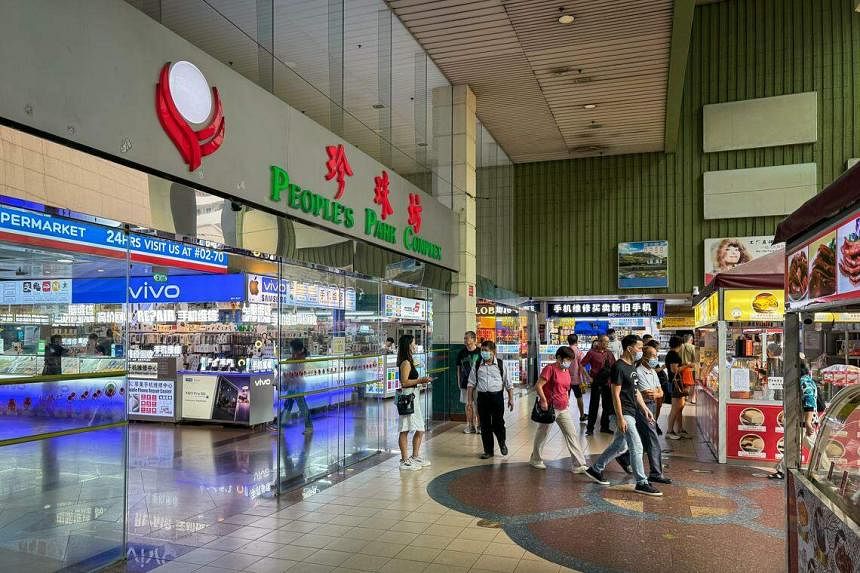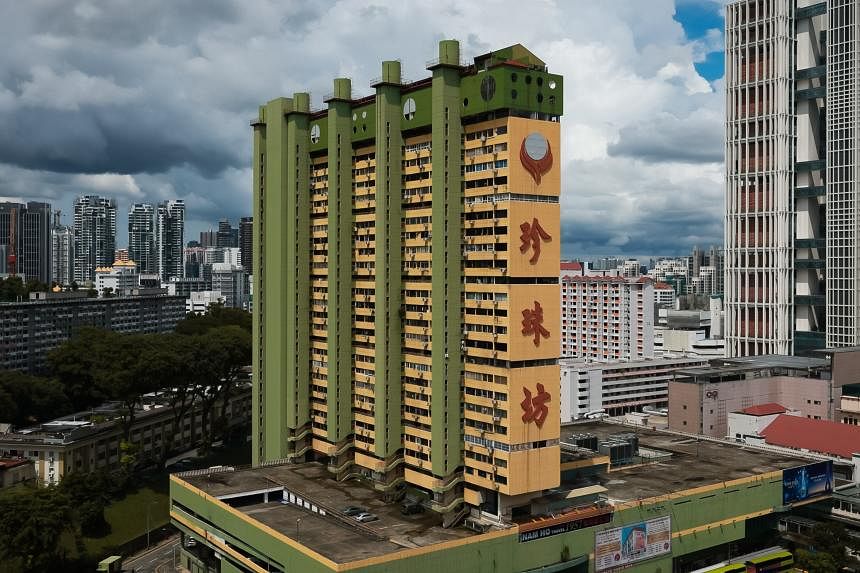SINGAPORE – People’s Park Complex, built in the 1970s as South-east Asia’s first multi-use complex, may be proposed for conservation in view of its high heritage significance, said the urban planning authorities.
The move was welcomed by heritage groups, which have urged that the building be saved, but it may impact a second attempt at a collective sale launched by its owners in March 2023.
A spokesperson for the Urban Redevelopment Authority (URA) told The Straits Times on Dec 21 that it has informed the property’s management corporation strata title and collective sales committee’s representatives that URA had assessed the building to be of high heritage significance.
The collective sale effort should take into account the ongoing conservation study and its findings, which have yet to be concluded, said URA.
Mr Lim Fang Hua, chairman of the People’s Park Complex collective sale committee, said it would proceed with its plans for sale, which include an asking price of $1.3 billion.
He said it received the notice from URA in November, and many details remained to be ironed out.
“However, we don’t foresee a big impact on our sale,” he said, adding that close to 50 per cent of the unit owners have given consent for the sale.
People’s Park Complex launched a first attempt at a collective sale in 2018 at the same asking price, but failed to obtain the required consent of 80 per cent of the unit owners. There are 391 commercial units, 278 residences and a carpark.
Ms Anna Tan, business development director of Tag Realty, the sales agent, said it has been in touch with URA to gain a deeper understanding of the conservation plans.
“The conservation efforts have the potential to elevate the aesthetic appeal of People’s Park Complex, positioning it as an integral component of the revitalised central region. This, in turn, can generate heightened interest from potential buyers,” she said.
She hopes to collaborate with URA to facilitate the conservation process during the ongoing collective sale, including possible incentives to sweeten the deal for potential buyers.

A decision to gazette the building would have an impact on its attempt to be sold, said Mr Govinda Singh, Colliers’ executive director and head of hotels and leisure and real estate advisory, citing the example of Golden Mile Complex.
The multi-use complex in Beach Road was gazetted for conservation in October 2021 after it launched a collective sale.
It was sold in 2022 for $700 million to a consortium comprising Perennial Holdings, Sino Land and Far East Organization. This was $100 million less than the original $800 million reserve price.
The first attempt to sell the complex at a reserve price of $800 million in 2019 ended with no bids.
URA stepped in with incentives to make development options for Golden Mile Complex more attractive to buyers concerned about the constraints imposed by conservation rules.
The incentives included allowing developers to build a new tower block about 30 storeys high beside the main conserved building. Tax incentives were also provided, lowering development costs.
Mr Singh said: “It would be interesting to see what incentives URA will be prepared to offer, if any, to support a successful outcome (for People’s Park Complex).”
He added that buyers would expect a discount on pricing.
The right sweeteners could cancel out any disincentives developers might have in buying a conservation property, said other analysts.
Mr Jeremy Lake, Savills’ managing director for investment sales and capital markets, said: “The act of conservation is not a show-stopper in itself, and the URA may offer incentives which are appealing to developers. More importantly, the reserve price per square foot per plot ratio must be reasonable if the owners want developers to bid.”
People’s Park Complex, a strata-titled development, was designed by Mr Koh Seow Chuan, the late Mr William Lim, Mr Tay Kheng Soon, Mr Gan Eng Oon and Mr Chee Soon Wah from Design Partnership, now known as DP Architects.
Completed in 1973, the 31-storey building was a first-of-its-kind not only in Singapore, but also in South-east Asia – a multi-use development with shops, homes, offices and carpark facilities within a single structure.
Occupying an area of 1ha, it was once Singapore’s largest shopping complex. It also featured the country’s first atrium in a shopping centre, where shops and kiosks generated a bazaar-like atmosphere.
It has 44 years left on its lease.
Mr Seah Chee Huang, chief executive of DP Architects, said the firm is excited by the prospect that the building may be gazetted.
“Like Golden Mile Complex, this post-independence landmark is an immensely special project for us. More than that, People’s Park Complex embodies powerful narratives of Singapore’s history, urban renewal and nation building,” he said.
Mr Koh, 84, who was part of the design team, told ST that People’s Park Complex was the first major building to reflect Singapore’s spirit of nation-building after independence.
“We built multiple atriums interlocking with one another, reflecting the coming together of different races and religions in our society,” he said.
It was also built in the brutalist architectural style, reflecting Singapore’s spirit to be “functional”, he said. The style is marked by monumental structures made of off-form concrete without being plastered over, for an appearance of “strength and solidity”.
“We always felt that the building should be conserved because of its historical significance,” Mr Koh added.
“It will take much time and cost to do so. We will be glad to offer our ideas for the conservation.”


